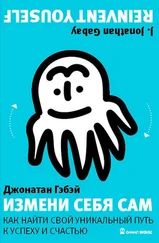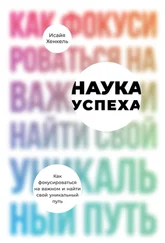Flynn, F. et al. (2008) ‘If you need help, just ask: Underestimating compliance with direct requests for help’. Journal of Personality and Social Psychology , 95 (1): 128–143. http://dx.doi.org/10.1037/0022-3514.95.1.128.
Carrier, J. and Monk, T. H. (2000). ‘Circadian rhythms of performance: new trends’. Chronobiology International . 17 (6): 719–32. https://www.ncbi.nlm.nih.gov/pubmed/11128289.
Hull, J. T., Wright, K.P. and Czeisler, C. A. (2003). ‘The influence of subjective alertness and motivation on human performance independent of circadian and homeostatic regulation’. Journal of Biological Rhythms , 18 (4): 329–38. https://www.ncbi.nlm.nih.gov/pubmed/12932085.
Pronin, E., Lin, D. and Lin, L. R. (2002). ‘The bias blind spot: Perceptions of bias in self versus others’. Personality and Social Psychology Bulletin , 28 (3). http://journals.sagepub.com/doi/abs/10.1177/0146167202286008.
Pronin, E., Gilovich, T. and Ross L. (2004). ‘Objectivity in the eye of the beholder: divergent perceptions of bias in self versus others’. Psychological Review . 111 (3): 781–99. https://www.ncbi.nlm.nih.gov/pubmed/15250784.
Leitner, J. B., Hehman, E. and Deegan M. (2014). ‘Adaptive disengagement buffers self-esteem from negative social feedback’. http://journals.sagepub.com/doi/abs/10.1177/0146167214549319.
. ‘Reciprocity’. Wikipedia: https://en.wikipedia.org/wiki/Reciprocity_(social_psychology).
Stinson, F.S., et al. (2008). ‘Prevalence, correlates, disability, and comorbidity of DSM-IV narcissistic personality disorder: results from the wave 2 national epidemiologic survey on alcohol and related conditions’. Journal of Clinical Psychiatry . 69 (7):1033–45. https://www.ncbi.nlm.nih.gov/pubmed/18557663.
Zitek, E., et al. (2010). ‘Victim entitlement to behave selfishly’. Journal of Personality and Social Psychology , 98 (2): 245–255. https://www.ncbi.nlm.nih.gov/pubmed/20085398.
Allen, J. (2012). ‘Decisions, decisions…dopamine?’ http://www.capitalcityweekly.com/stories/021512/new_955739899.shtml.
Baumeister, R. (2006). ‘Self-regulation and personality: How interventions increase regulatory success, and how depletion moderates the effects of traits on behavior’. Journal of Personality . 74 (6): 1773–1802. http://onlinelibrary.wiley.com/doi/10.1111/j.1467–6494.2006.00428.x/abstract.
Lehrer, J. (2009). ‘Blame it on the brain: The latest neuroscience research suggests spreading resolutions out over time is the best approach’. The Wall Street Journal . https://www.wsj.com/articles/SB10001424052748703478704574612052322122442.
Duhigg, C. (2012). The Power of Habit: Why we do what we do, and how to change . London: William Heinemann.
Mann, S. and R. Cadman (2014). ‘Does being bored make us more creative?’ Creativity Research Journal 26 (2): 165–173. http://www.tandfonline.com/doi/abs/10.1080/10400419.2014.901073#.VcUdexNVikp.
Gasper, K. and B. Middlewood. (2014). ‘Approaching novel thoughts: Understanding why elation and boredom promote associative thought more than distress and relaxation’. Journal of Experimental Social Psychology 52: 50–57. http://www.sciencedirect.com/science/article/pii/S0022103113002205.
Richtel, M. (2012). ‘And the walls came tumbling down, again: Lessons in the art of pillow fort construction’. The Wall Street Journal . http://www.nytimes.com/2012/04/19/garden/lessons-in-the-art-of-pillow-fort-construction.html?pagewanted=all&_r=0.
. ‘Feasting: The archaeology and history of celebrating food’. https://www.thoughtco.com/feasting-archaeology-and-history-170940.
Stromberg, P. G. (2009). ‘The great feast: he mystery lurking behind our national feast’. Psychology Today . https://www.psychologytoday.com/blog/sex-drugs-and-boredom/200911/the-great-feast.
Telos consulting. ‘Want to be less stressed and live longer? Think like a leader’. http://www.teleosconsulting.com/2012/11/want-to-be-less-stressed-and-live-longer-think-like-a-leader.
Richtel, M. (2012). ‘The competing views on competition’. New York Times . http://www.nytimes.com/2012/10/11/garden/the-role-of-competitiveness-in-raising-healthy-children.html.
Seppälä, E. (2013). ‘How desire fools us: The benefits and dangers of the chase’. Psychology Today . https://www.psychologytoday.com/blog/feeling-it/201308/how-desire-fools-us-the-benefits-and-dangers-the-chase.
Knutson, B. ‘Visualizing desire’. Stanford University. https://www.youtube.com/watch?v=CUK8D-kX0fE.
Brooks, C. (2012). ‘Recognizing employees is crucial to retention’. Business News Daily . http://www.businessnewsdaily.com/2350-employee-recognition-happiness.html.
Gonathellis, O. ‘5 Ways to connect with your desire to create’. http://psychcentral.com/blog/archives/2013/02/28/5-ways-to-reconnect-with-your-desire-to-create.
Logan, D. (2011). ‘Leadership advice that can help you live longer’. CBS: Moneywatch . http://www.cbsnews.com/news/leadership-advice-that-can-help-you-live-longer.
Friedman, H. S. and L. R. Martin (2012). The Longevity Project: Surprising discoveries for health and long life from the landmark eight-decade study. New York: Plume (Русский перевод: Фридман Х., Мартин Л. Проект «Долголетие». Сенсационные открытия, сделанные на основе исследования, которое длилось почти 100 лет. – М.: София, 2011.)
Krans, B. (2013). ‘The health benefits of sleeping under the stars’. http://www.healthline.com/health-news/mental-sleeping-outdoors-does-wonders-for-your-health-080213.
. ‘Circadian rhythm’. Wikipedia. https://en.wikipedia.org/wiki/Circadian_rhythm.
. Huffington Post. (2013). ‘Studies show that walking in the morning lowers stress and even relieves pain’. http://www.huffingtonpost.com/2013/04/03/national-walking-day-stress-relief-tips_n_2992972.html.
![Исайя Хенкель Наука успеха [Как фокусироваться на важном и найти свой уникальный путь] [litres] обложка книги](/books/406569/isajya-henkel-nauka-uspeha-kak-fokusirovatsya-na-cover.webp)

![Грегори Робертс - Духовный путь [litres]](/books/385614/gregori-roberts-duhovnyj-put-litres-thumb.webp)
![Фрэнк Мартела - Wonderful Life. Размышления о том, как найти смысл жизни [litres]](/books/390695/frenk-martela-wonderful-life-razmyshleniya-o-tom-k-thumb.webp)
![Кэрри Лонсдейл - Новый путь [litres]](/books/391049/kerri-lonsdejl-novyj-put-litres-thumb.webp)
![Анна Мохова - Ты не одна [Как забыть одиночество и найти счастье внутри себя] [litres]](/books/395417/anna-mohova-ty-ne-odna-kak-zabyt-odinochestvo-i-n-thumb.webp)
![Джошуа Кертисс - Не позволяйте тревоге рулить вашей жизнью [Наука управления эмоциями. Наука управления эмоциями и осознанность для преодоления страха и беспокойства] [litres]](/books/412454/dzhoshua-kertiss-ne-pozvolyajte-trevoge-rulit-vashej-thumb.webp)
![Анна Одувалова - Как найти королеву Академии? [litres]](/books/413718/anna-oduvalova-kak-najti-korolevu-akademii-litre-thumb.webp)
![Ирина Котова - Королевская кровь. Огненный путь [litres]](/books/427447/irina-kotova-korolevskaya-krov-ognennyj-put-lit-thumb.webp)
![Джон Эспозито - Последний путь [litres]](/books/430069/dzhon-espozito-poslednij-put-litres-thumb.webp)
![Игорь Шелег - Тернистый путь [litres]](/books/433315/igor-sheleg-ternistyj-put-litres-thumb.webp)

